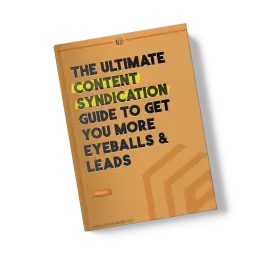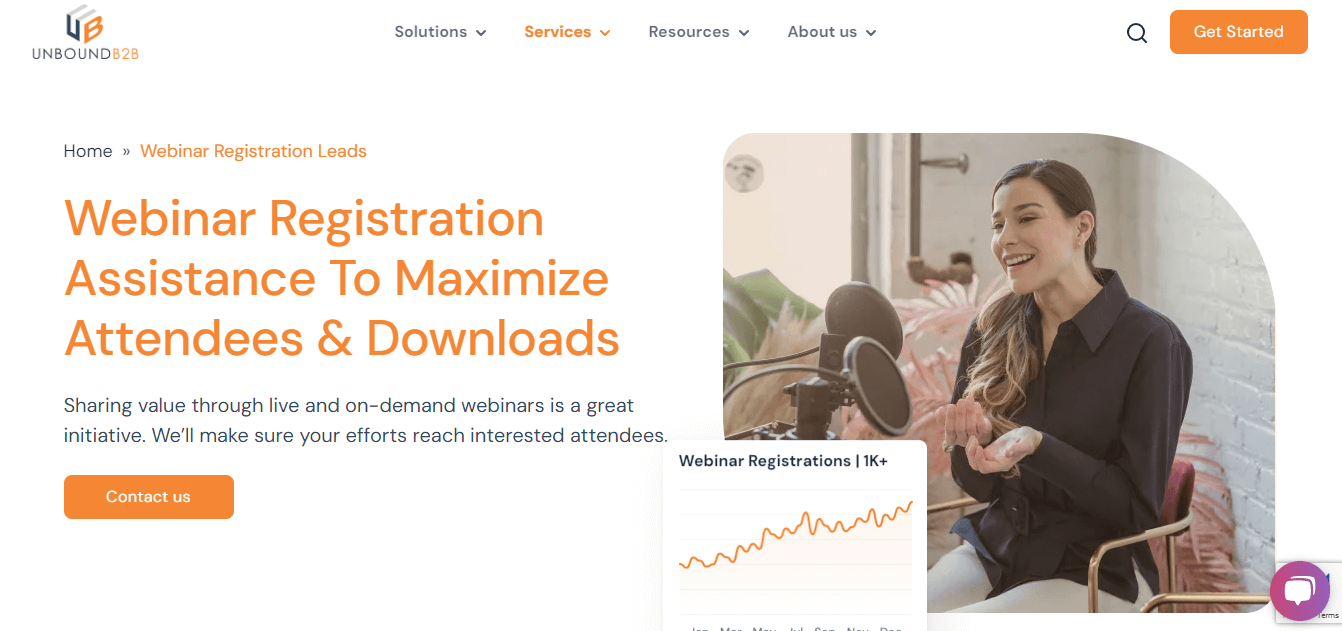
Demand generation Vs. lead generation is a tough comparison and is often challenging for marketers to understand the difference. Both marketing disciplines are more complementary than opposed to each other. Think of both of them as two items that are better together, much like hot cocoa and marshmallows.
Demand and lead generation are two marketing gems that can work in tandem to create warmer and better results from digital marketing. Most marketers are more familiar with lead generation than they are with demand generation.
The latter is, however, gaining ground on lead generation, and most marketers plan to increase their demand generation budgets.
Here is the distinct demand generation vs. lead generation comparison for better comprehension.
What is Demand Generation?
Also known as demand gen, it is a form of marketing that focuses on getting your business’ name out there. It seeks to establish relationships with potential customers by getting them warmed up and optimistic about your services or products.
The result of a well-done demand generation strategy is the introduction of new visitors to your business. These visitors can be turned into qualified leads. Lead generation is one of the many demand generation strategies out there.
Examples of Demand Generation Strategies:
- Content Syndication
- Brand Promotions
- Influencer Articles
- Display Ads
- Event Promotion
1. Content Syndication
When executed correctly, content syndication can bring in many leads, increase your site’s authority, and heighten brand awareness. Content syndication is more than leaving guest posts on a person’s blog. Such processes can only bring in minimal useful backlinks.
At its best, content syndication allows you to distribute and publish your best content via reputable third parties. It is, therefore, often a paid opportunity that will amplify your reach by leveraging the influence of larger content distributors.
The average person online spends over 11 hours of the day consuming information. There is information overload out there and tapping into larger lead pools can significantly enhance your demand gen. Therefore, many businesses can use content syndication to break through the noise.
Your business will not only enjoy high-value backlinks but also increase brand awareness and warm leads via content syndication. What to know how? Download the eBook now!

2. Brand Promotions
A promotion strategy can increase service or product demand. Brand promotion strategies are dictated by your demand gen’s budget, plan of action, and target audience. Below are some brand promotion strategies that can be used to enhance demand generation for your business.
Content Marketing
Email and Social Media Marketing
Referrals for Trust-Building
Giving Away Free Samples, Tools, Resources or Apps
Demand generation content marketing can be done through blogging, posting on social media, or advertising. One key feature of this strategy is the creation of copy that has a direct association with your brand.
The process starts with the creation of content, then its promotion, measurement, and continuous optimization.
Different social media platforms engage different audiences better than others.
LinkedIn, for instance, has a professional approach, and it is the most popular platform for most Fortune 500 businesses. The platform is also the ideal spot for demand generation, with 94% of all B2B marketers using it for content publication.
Pew Research data shows that over 73% of Americans use YouTube, while 68% of them are on Facebook. Your brand can leverage these platforms for increased exposure and to create warm customer relationships.
Valuable and well-timed email marketing messages such as event invites, feature launches, or newsletters to a well-targeted and segmented audience can also significantly enhance demand gen.
The majority of people online say that they find recommendations of products or services from friends more believable than other marketing messages. Word-of-mouth marketing can be perfect for new businesses’ demand gen.
Referral programs and the building of online communities around your brand can enhance your demand generation strategy.
People love discounts and freebies. Customers are willing to try most products or services if they do not have to commit. However, you must ensure that the discounted or free resources are so useful to the customer that they will be willing to pay for them later for a repeat experience.
3. Influencer Articles
Data shows that there has been a growth of over 150% in the influencer-sponsored posts segment. The study predicts that brands will spend more on influencer marketing in 2020 and push it to a $10 billion industry.
Influencer articles are the digital equivalent of traditional celebrity endorsements. Since influencers have multitudes of followers on social media, they are more trustworthy and can reduce demand gen effort and time for your business. They will also bring in more brand credibility since they are considered domain experts.
Take a look at UnboundB2B’s influencer article and expert insight on ABM with Colby Wren who has over a decade’s experience in marketing.
4. Display Ads
Display advertising, just like traditional television commercials, is the most visible form of internet branding. These ads are measurable by impressions or clicks. They are displayed to your brand’s target audience and can be retargeted depending on specific user activity online.
5. Event Promotion
Your business can also sponsor events for passive brand visibility mileage. This strategy utilizes both inbound and outbound sponsorship promotions. The inbound type gives event attendees excellent customer experience, valuable content, and quality information.
Outbound promotions reach out to the masses to attract customers to your brand. An easier approach to effective outbound event promotion sponsorship is by infusing your brand with event proceedings.
What Is Lead Generation?
Lead generation, known as lead gen in marketing circles, is a big part of demand gen. Lead gen strategies convert potential customers into spenders or qualified leads. The strategy funnels in people with interest in your product or service, turning them into purchasers.
Such leads can then be nurtured into loyal customers. The type of information disseminated by lead generation strategies is different from demand generation information. Lead gen creates “gated” content to attract a specific target market.
Any interested customer will need to provide their contacts to receive lead generation content. There are different types of lead gen strategies including;
Intent-Driven ABM Campaigns
Intent-driven account-based marketing is a lead generation strategy that focuses on investments and efforts on accounts that generate business revenue. You can begin your intent-driven ABM campaigns by leveraging B2B data to create behavior and personalized lead generation.
Such campaigns track the buying intent and digital footprints of their target accounts and then use the acquired business intelligence to engage them appropriately.
Marketing data has many good things to say about ABM marketing.
Combining an ABM campaign with the best B2B lead generation platforms can bring in leads that have a higher chance of making a purchase. This is the reason why most marketers say that ABM initiatives consistently outperform all other marketing strategies.
More data shows that businesses that utilize ABM achieve over 200% more generation of revenue from marketing than those that do not. An Intent-Driven ABM campaign also eliminates common engagement roadblocks and can shorten sales cycles
Whitepaper Syndication
White papers are compelling content-driven marketing tools. They can amplify your lead generation campaigns by establishing your brand credibility and position as a market thought leader. The creation of white papers is very resourceful and time-consuming.
It also takes a lot of effort to bring research to the business’s target audience. A whitepaper syndication plan should be set while the research is in its development form to ensure that the final product is available to a broad target audience.
Effective whitepaper syndication plans will enhance the credibility of your brand, giving you a strong industry foothold. Besides differentiating you from your competition, whitepapers will also boost organic traffic to your site to increase your SEO ranking.
Whitepaper syndication will make your brand more digitally visible and accessible since white papers can reach a massive audience in very short periods. Additionally, this strategy will enhance team productivity and give your business useful audience interaction and marketing data.
Webinar Promotion

Businesses today have learned that webinars are excellent lead generation tools and are increasingly putting up very savvy webinar content.
Webinars can attract high-quality leads with better conversion rates. To achieve high lead generation rates, you have to pay special attention to every step and detail of webinar design and hosting to attract the right customer.
The results of a well-planned webinar promotion can be outstanding. For example, Shopify uses webinars to capture anonymous blog readers. The platform has a blog sidebar that promotes a webinar complete with a minute countdown timer. This feature creates a sense of urgency leading blog readers to sign up for fear of missing out. The payout for Shopify is enormous.
You can use webinar promotions to establish credibility and trust amongst your leads and eventually capture them. Webinar subscribers are high-quality and responsive leads seeking a connection or information from a brand.
Webinars additionally allow lead generation from all over the world and can act as a means of collaborating with other brands.
Conclusion
There you have it demand generation Vs. lead generation. Demand gen is not the newest shiny buzzword on the digital marketing scene but an all-encompassing discipline. Lead generation is just a subset of demand gen. Use these disciplines to create brand awareness and to qualify leads into loyal customers. This article answers many of the demand generation Vs. lead generation questions to bring you the understanding and clarity for your next strategy.
Our blog
Latest blog posts
Tool and strategies modern teams need to help their companies grow.

It is for fact that today's buying environment demands more. With longer sales cycles...

To build a marketing strategy that drives real results, you need more than creative i...

The 95/5 rule in B2B marketing shows that while only 5% of buyers are ready to purcha...







